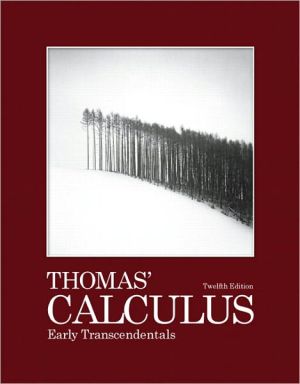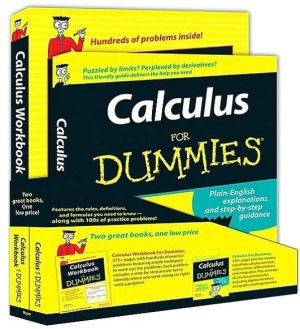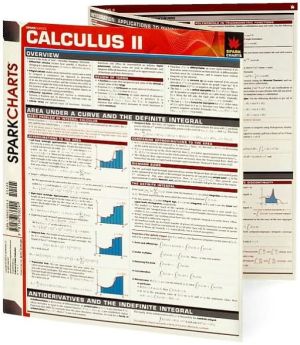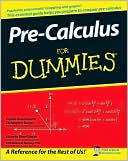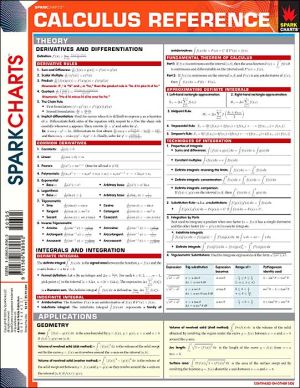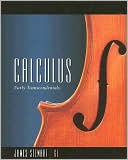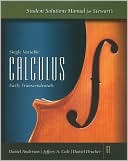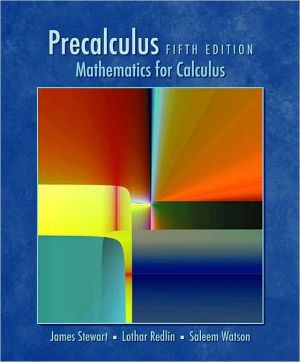Thomas' Calculus Early Transcendentals
This text is designed for the single variable component of a three-semester or four-quarter calculus course (math, engineering, and science majors). \ Calculus hasn’t changed, but your students have. Today’s students have been raised on immediacy and the desire for relevance, and they come to calculus with varied mathematical backgrounds. Thomas’ Calculus: Early Transcendentals, Twelfth Edition, helps your students successfully generalize and apply the key ideas of calculus through clear and...
Search in google:
Calculus hasn’t changed, but readers have. Today’s readers have been raised on immediacy and the desire for relevance, and they come to calculus with varied mathematical backgrounds. Thomas’ Calculus: Early Transcendentals, Twelfth Edition, helps readers successfully generalize and apply the key ideas of calculus through clear and precise explanations, clean design, thoughtfully chosen examples, and superior exercise sets. Thomas offers the right mix of basic, conceptual, and challenging exercises, along with meaningful applications. This significant revision features more examples, more mid-level exercises, more figures, improved conceptual flow, and MyMathLab®, the best in technology for learning and teaching.KEY TOPICS:Functions; Limits and Derivatives; Differentiation; Applications of Derivatives; Integration; Applications of Definite Integrals; Integrals and Transcendental Functions; Techniques of Integration; First-Order Differential Equations; Infinite Sequences and Series; Parametric Equations and Polar Coordinates; Vectors and the Geometry of Space; Partial Derivatives; Multiple Integrals; Integration in Vector Fields; Second-Order Differential EquationsMARKET: For all readers interested in Calculus.
1. Functions1.1 Functions and Their Graphs1.2 Combining Functions; Shifting and Scaling Graphs1.3 Trigonometric Functions1.4 Graphing with Calculators and Computers1.5 Exponential Functions1.6 Inverse Functions and Logarithms2. Limits and Derivatives2.1 Rates of Change and Tangents to Curves2.2 Limit of a Function and Limit Laws2.3 Precise Definition of a Limit2.4 One-Sided Limits2.5 Continuity2.6 Limits Involving Infinity, Asymptotes of Graphs3. Differentiation3.1 Tangents and the Derivative at a Point3.2 The Derivative as a Function3.3 Rules for Polynomials, Exponentials, Products, and Quotients3.4 The Derivative as a Rate of Change3.5 Derivatives of Trigonometric Functions3.6 The Chain Rule3.7 Implicit Differentiation3.8 Derivatives of Inverse Functions and Logarithms3.9 Inverse Trigonometric Functions3.10 Related Rates3.11 Linearization and Differentials4. Applications of Derivatives4.1 Extreme Values of Functions4.2 The Mean Value Theorem4.3 Monotonic Functions and the First Derivative Test4.4 Concavity and Curve Sketching4.5 Indeterminate Forms and L'Hopital's Rule4.6 Applied Optimization4.7 Newton's Method4.8 Antiderivatives5. Integration5.1 Area and Estimating with Finite Sums5.2 Sigma Notation and Limits of Finite Sums5.3 The Definite Integral5.4 The Fundamental Theorem of Calculus5.5 Indefinite Integrals and the Substitution Rule5.6 Substitution and Area Between Curves6. Applications of Definite Integrals6.1 Volumes Using Cross-Sections6.2 Volumes Using Cylindrical Shells6.3 Arc Length6.4 Areas of Surfaces of Revolution6.5 Work and Fluid Forces6.6 Moments and Centers of Mass7. Integrals and Transcendental Functions7.1 The Logarithm Defined as an Integral7.2 Exponential Change and Separable Differential Equations7.3 Hyperbolic Functions7.4 Relative Rates of Growth8. Techniques of Integration8.1 Integration by Parts8.2 Trigonometric Integrals8.3 Trigonometric Substitutions8.4 Integration of Rational Functions by Partial Fractions8.5 Integral Tables and Computer Algebra Systems8.6 Numerical Integration8.7 Improper Integrals9. First-Order Differential Equations9.1 Solutions, Slope Fields, and Euler's Method9.2 First-Order Linear Equations9.3 Applications9.4 Graphical Solutions of Autonomous Equations9.5 Systems of Equations and Phase Planes10. Infinite Sequences and Series10.1 Sequences10.2 Infinite Series10.3 The Integral Test10.4 Comparison Tests10.5 The Ratio and Root Tests10.6 Alternating Series, Absolute and Conditional Convergence10.7 Power Series10.8 Taylor and Maclaurin Series10.9 Convergence of Taylor Series10.10 The Binomial Series and Applications of Taylor Series11. Parametric Equations and Polar Coordinates11.1 Parametrizations of Plane Curves11.2 Calculus with Parametric Curves11.3 Polar Coordinates11.4 Graphing in Polar Coordinates11.5 Areas and Lengths in Polar Coordinates11.6 Conic Sections11.7 Conics in Polar Coordinates12. Vectors and the Geometry of Space12.1 Three-Dimensional Coordinate Systems12.2 Vectors12.3 The Dot Product12.4 The Cross Product12.5 Lines and Planes in Space12.6 Cylinders and Quadric Surfaces13. Vector-Valued Functions and Motion in Space13.1 Curves in Space and Their Tangents13.2 Integrals of Vector Functions; Projectile Motion13.3 Arc Length in Space13.4 Curvature and Normal Vectors of a Curve13.5 Tangential and Normal Components of Acceleration13.6 Velocity and Acceleration in Polar Coordinates14. Partial Derivatives14.1 Functions of Several Variables14.2 Limits and Continuity in Higher Dimensions14.3 Partial Derivatives14.4 The Chain Rule14.5 Directional Derivatives and Gradient Vectors14.6 Tangent Planes and Differentials14.7 Extreme Values and Saddle Points14.8 Lagrange Multipliers14.9 Taylor's Formula for Two Variables14.10 Partial Derivatives with Constrained Variables15. Multiple Integrals15.1 Double and Iterated Integrals over Rectangles15.2 Double Integrals over General Regions15.3 Area by Double Integration15.4 Double Integrals in Polar Form15.5 Triple Integrals in Rectangular Coordinates15.6 Moments and Centers of Mass15.7 Triple Integrals in Cylindrical and Spherical Coordinates15.8 Substitutions in Multiple Integrals16. Integration in Vector Fields16.1 Line Integrals16.2 Vector Fields and Line Integrals: Work, Circulation, and Flux16.3 Path Independence, Conservative Fields, and Potential Functions16.4 Green's Theorem in the Plane16.5 Surfaces and Area16.6 Surface Integrals16.7 Stokes' Theorem16.8 The Divergence Theorem and a Unified Theory17. Second-Order Differential Equations (online)17.1 Second-Order Linear Equations17.2 Nonhomogeneous Linear Equations17.3 Applications17.4 Euler Equations17.5 Power-Series SolutionsAppendices1. Real Numbers and the Real Line2. Mathematical Induction3. Lines, Circles, and Parabolas4. Proofs of Limit Theorems5. Commonly Occurring Limits6. Theory of the Real Numbers7. Complex Numbers8. The Distributive Law for Vector Cross Products9. The Mixed Derivative Theorem and the Increment Theorem
